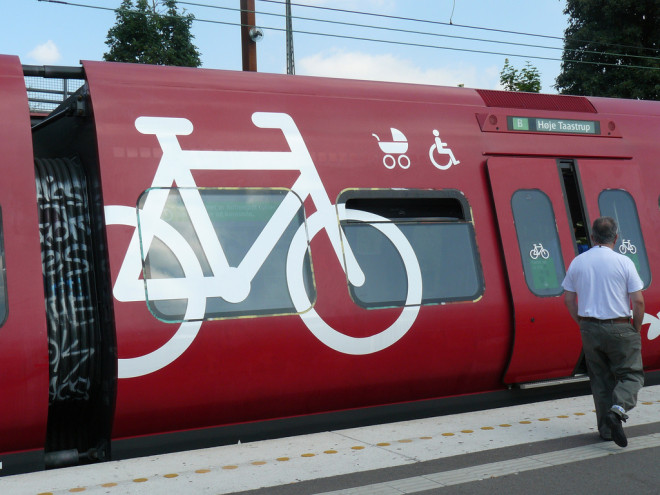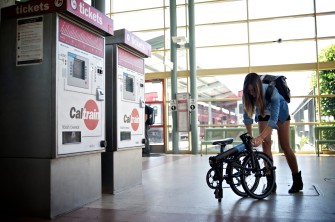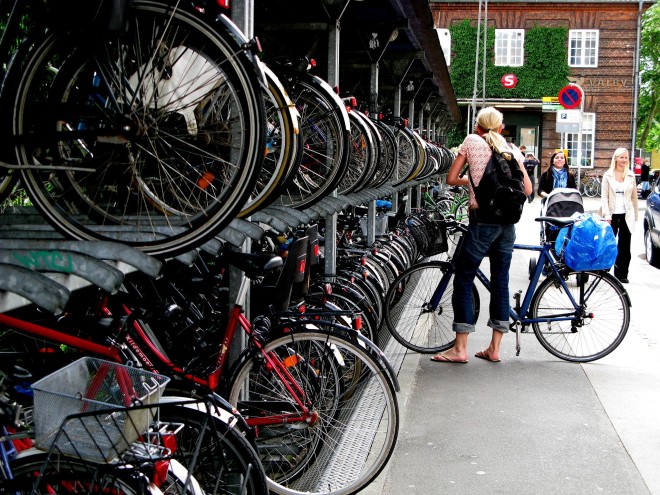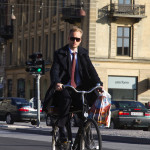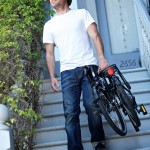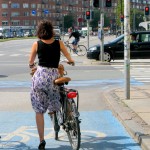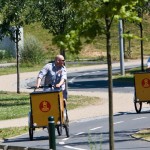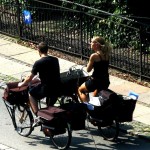
I Now Pronounce You Husband & Bike: Marrying Cycling and Public Transport
 |
 |
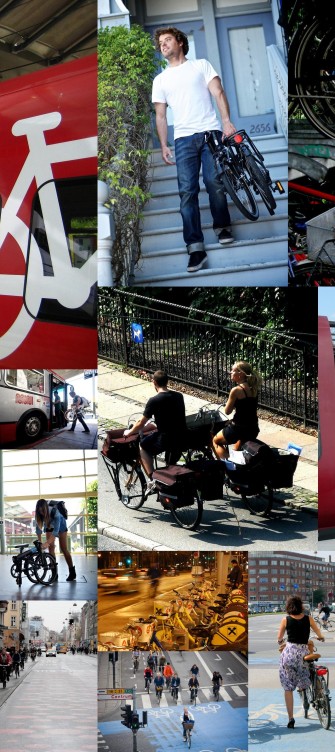 |
 |
|
(Monday, April 30) |
(Thursday, May 2) |
(Friday, May 3) |
We developed a series of articles for the ITF. You can click on the picture above to see them as soon as they're online. For Post-coverage of the ITF, click here
There's a global push to get people out of cars and onto public transport (PT). Grid-locked roads are hurting economies (some 3% of GDP in OECD countries), and they're making cities unpleasant, noisy and polluted places to live. While there's no doubt that air pollution is a killer, you may be shocked to learn that 50,000 Europeans die each year because of traffic noise. Indeed, we're finally realizing that we need to change the way we move.
Yet despite this push, the car is still seductive for many because it means door-to-door transport. A train ride for example will mean having to walk or take the extra bus/tram journeys at the start and end of the journey. Understandably, many simply can't be bothered.
It's time to revisit this cliché: Imagine if a public transport (PT) provider could offer a door-to-door trip, anywhere in a city? Well the answer is right under their noses: the bicycle.
Cycling has the potential to change the way people think about PT. And in the suburbs, where car use tends to be higher, cycling extends the “catchment” area of transport. 9-16 more stops are within reach with a bicycle than on foot.
So how on earth should you go about doing this? Is it simply a matter of letting everybody take their bicycle on trains and buses? The answer is a little more complex
Bikes on Board?
Transport planners are often faced with the tricky conundrum of whether or not they should let bicycles on public transport.
For bicycles and public transport to flourish, a choice should be made: Either allow bicycles to travel on trains or otherwise provide great parking infrastructure. Or even better... do both.
In January 2010 Copenhagen opened up their “S-trains” to bicycles to encourage seamless commuting for those living in the suburbs. On these trains, train travelers are provided with a flex compartment allowing multiple bicycles on board trains at no extra cost. These compartments also cater for wheelchairs, strollers and large luggage.
The program has been a huge success. The number of passengers with bicycle has more than tripled since they made bicycle carriage free of charge in 2009; 27 % of passengers use the service because it's free so the train company has decided to increase bicycle carriage capacity because of success.
There is of course a down-side to this. Sidsel Birk Hjuler, a Copenhagen resident and cyclist explains that: “It’s a great idea, however pretty quickly I’ve noticed that it’s really difficult to cater for the growing demand.”
Allowing bikes on trains/buses/trams and metros is indeed brilliant, but when you have more than 30% of all trips done by bicycle, you'll be hard-pressed to find a place to put them all.
The bicycle industry thankfully arrived with a solution in hand: the folding bicycle. Even governments are starting to realize that folding bicycles can be brilliant for public transport. In Germany, the Munich Public Transport Association have actually teamed up with Tern bicycles and are offering discounted folding bicycles.
“Portable bikes take up very little space when folded and so make the perfect last-mile link on an extensive transport network,” says Joshua Tern, vice-president of Tern Bicycles.
The goal of their program is to encourage use of portable bicycles on Munich's transport network, including ICE high-speed trains, subway, and buses, and help alleviate bicycle parking congestion in front of train stations and the crowding of train cars with “regular” bicycles
Parking: The Dutch Approach
The Dutch approach doesn't try to get bikes on trains. It instead focuses on high quality parking (and more recently, bike sharing). In the Netherlands, out of the 365 million annual train trips, some 39% of train travelers had cycled to and from train stations. But people aren't going to park their bicycles at train stations if it's not safe and secure.
Bicycle parking must be considered as integral to all urban railway stations. All stations need ticket machines, toilets, platforms, and... bicycle parking. And not just any old bicycle parking.
The EU funded Bicycle Policy “Presto Project” made the following recommendations for effective bicycle parking:
-
A basic provision of stands and racks is recommended, ideally covered and protected from the weather.
-
As numbers increase, some rented lockers can be offered as a premium service.
-
At even larger numbers, collective storage should be considered on a subscription basis.
-
At the largest hubs, free indoor and supervised parking storage becomes feasible
While it can be hard to convince politicians to fork out money, it's important to make them see reason. Secure bicycle parking is up to 300 times cheaper than car parking with one space fitting 10-20 bicycles.
Video: Bicycle Parking in Antwerp... (prepare to be amazed)
Don't Just Build a Bicycle Path: Build a Network
At the end of the day, people will be less likely to ride their bicycles to and from stations if the urban environment is screaming “this is a place for cars”. Politicians need to spend more on cycling infrastructure. (In the EU, only 0.7% of co-funding for transport is spent on cycling. This figure should at least be 10%.)
And getting people to public transport will take more than building a bicycle path. In the same way that a public transport network needs to be complete, so does cycling. Imagine a metro line that doesn't connect the central station with the shopping precinct?
But for those cities that start connecting the dots, the marriage between bicycles and public transport is unlikely to end in divorce any time soon.
 About the Author
About the Author
Julian Ferguson is the Communications Officer for the European Cyclists’ Federation. Originally hailing from Australia and a keen bicycle advocate, he plans one day to ride his bicycle from Brussels to Melbourne
Photos
Resources
Contact the author
Recent news!
Upcoming events
Contact Us
Avenue des Arts, 7-8
Postal address: Rue de la Charité, 22
1210 Brussels, Belgium


